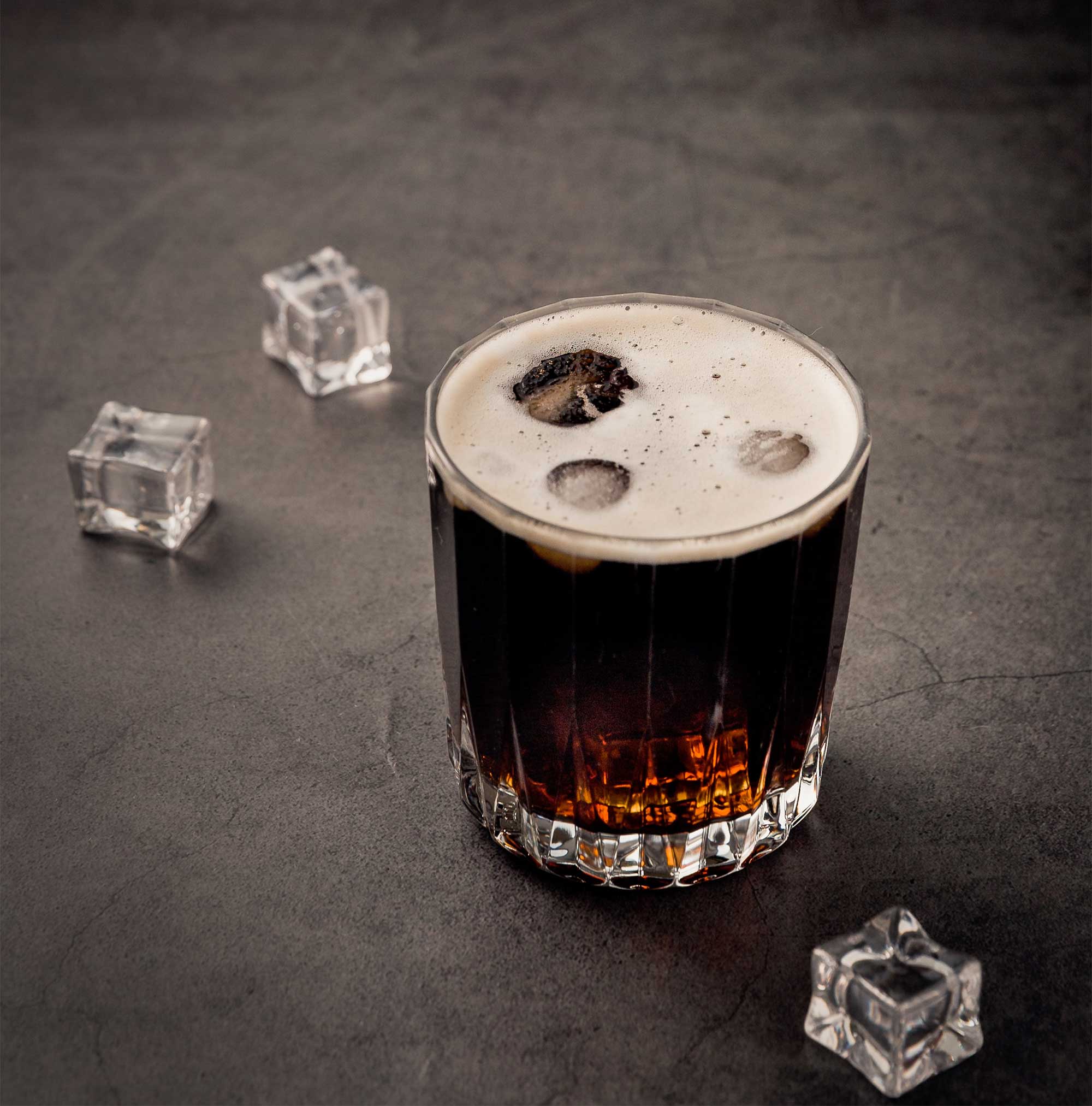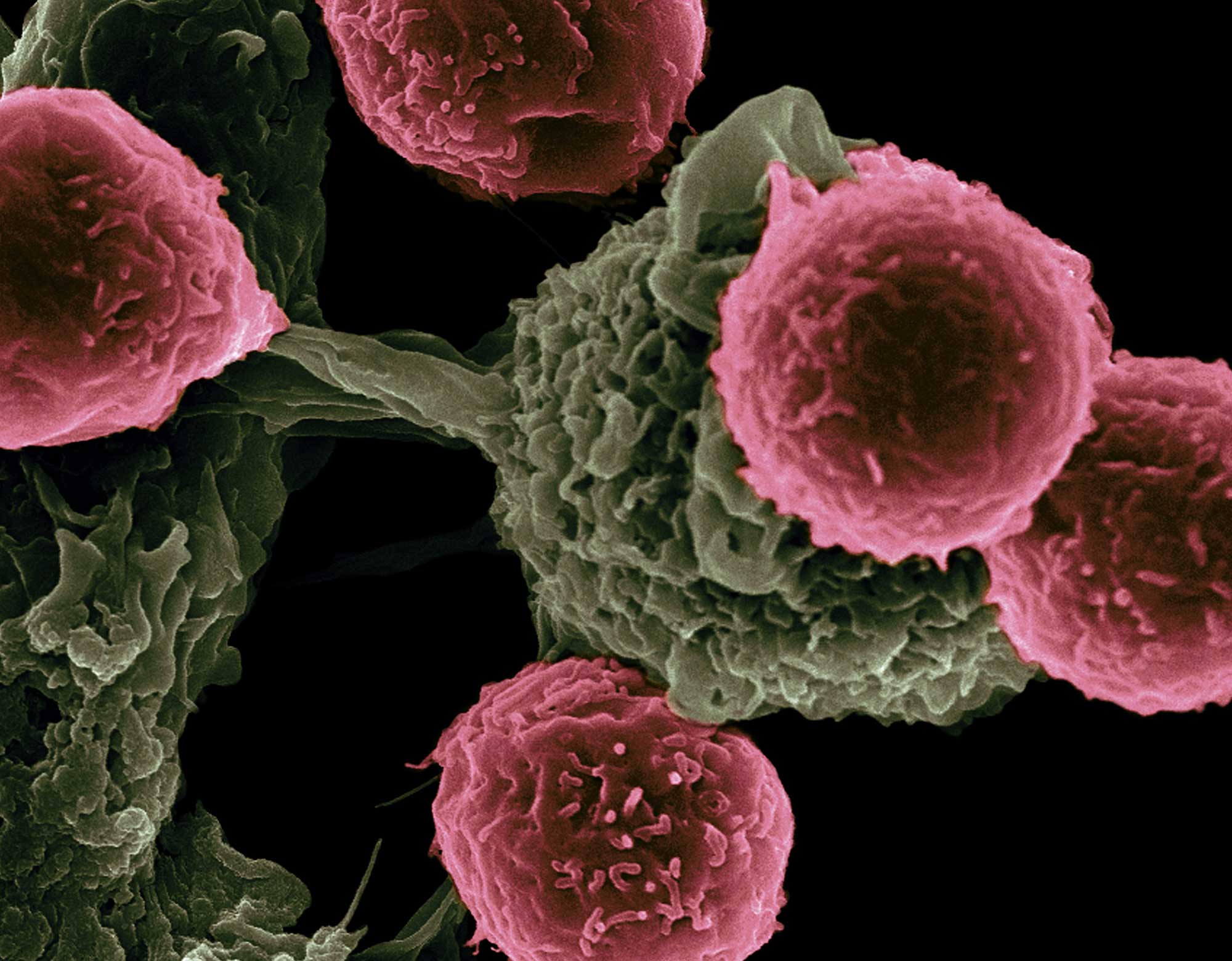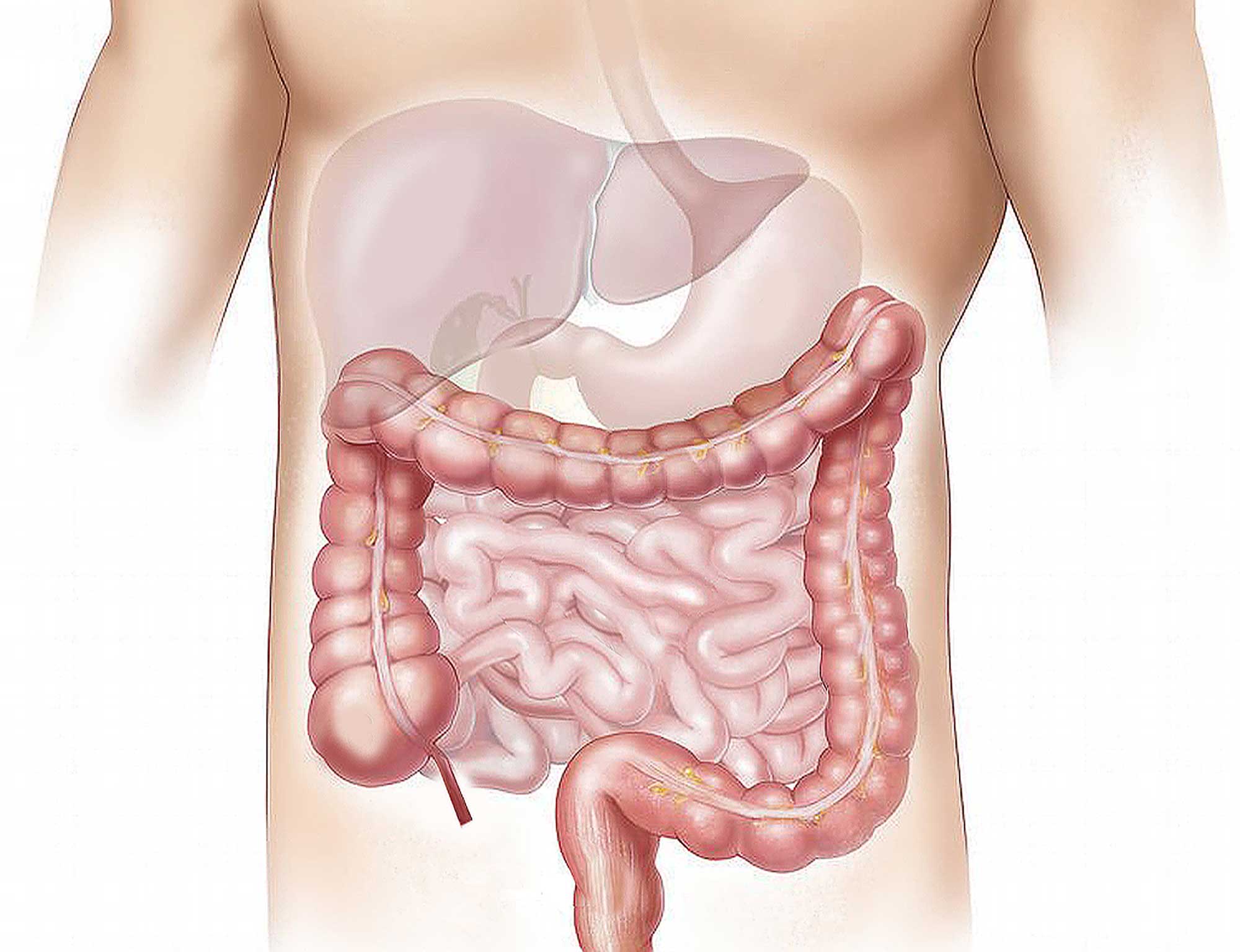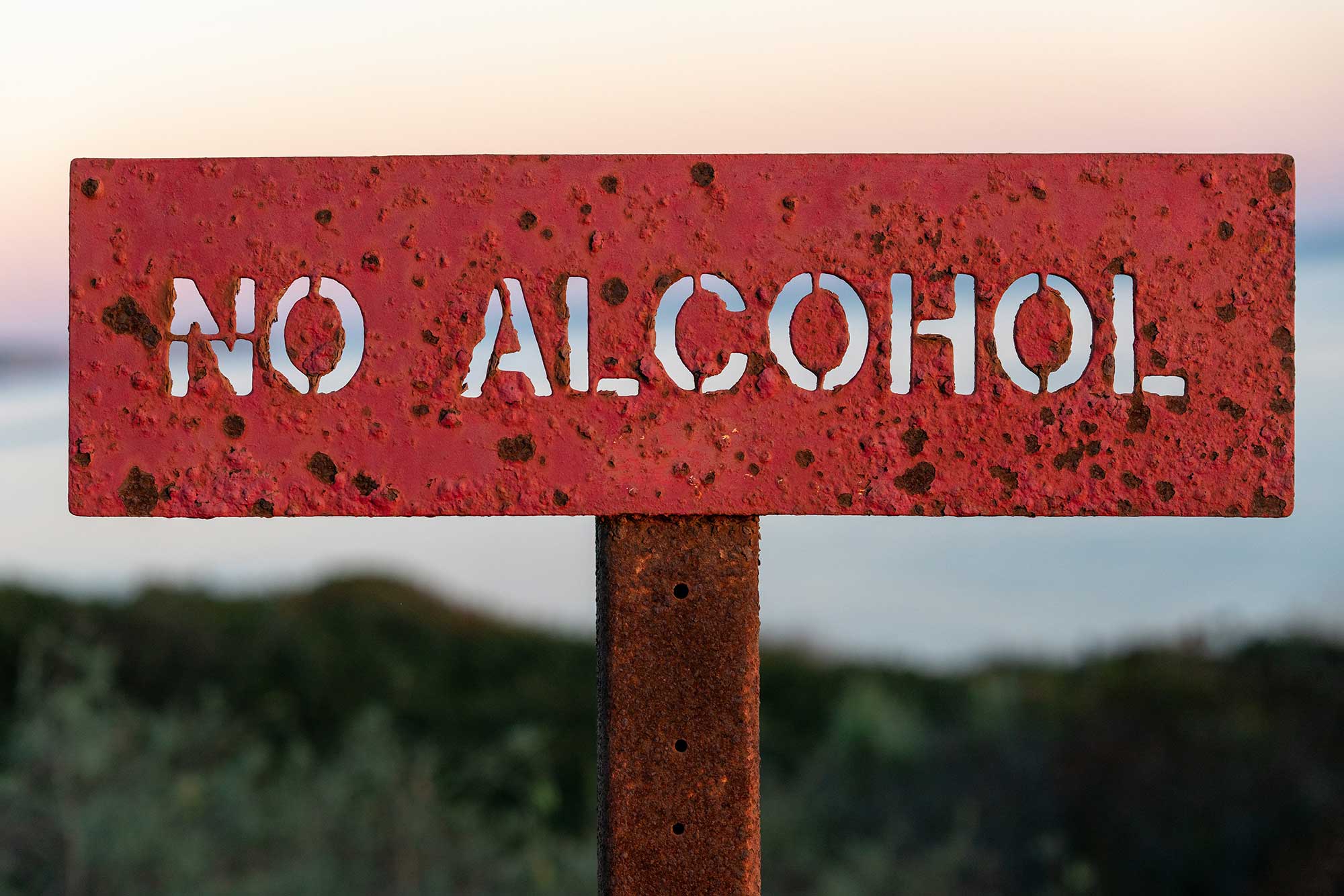
ALL ABOUT ALCOHOL & CAFFEINE – PART 9
ALL ABOUT ALCOHOL & CAFFEINE – PART 9
IS EVERYBODY DOING IT?
If you watch TV, you’d be forgiven for thinking that everybody drinks alcohol, and that they do so often.
In fact, globally, about 45% of people never drink alcohol.2
In Australia, about one in ten people never drink alcohol, and around one person out of every six drinks rarely—once a year or less.
Only 8% of Australians drink daily.3
In Great Britain, 15% of adults have never drunk alcohol, and 20% of 16–24 year olds do not drink at all.4
Despite these figures, many Western cultures are grappling with the problem of alcohol.

THE ALCOHOL PROBLEM
According to the National Health and Medical Research Council (NHMRC) in Australia, alcohol is responsible for a considerable burden of death, disease and injury that is not limited to the drinkers themselves.
Families, innocent bystanders, and the general community also suffer.5
PHYSICAL IMPACTS—SHORT TERM
Alcohol has obvious, fairly immediate impacts on the human brain. It is a central nervous system depressant, working quickly to create a relaxed state, as well as loss of inhibitions.6,7
As alcohol continues to slow down brain function, effects include loss of balance, difficulty walking, blurred vision, slurred speech, slowed reaction times, and impaired memory.8-10
Alcohol also irritates the stomach,11 resulting in nausea and vomiting, made potentially fatal by the fact that the gag reflex is inhibited by alcohol.
Through its impact on the nervous system, alcohol can inhibit both breathing and heartbeat,12,13 and can reduce the body’s core temperature, resulting in hypothermia.14
Decreased blood sugar levels can also result from alcohol consumption, potentially leading to seizures.15

Alcohol inhibits the anti-diuretic hormone—the hormone that reduces urination if you are becoming dehydrated.16
The result is unchecked urination, leading to dehydration that also contributes to a hangover.17
A large or very quick intake of alcohol can result in a blackout—a period of time for which the intoxicated person cannot recall key details of events, or even entire events, and during which they may engage in dangerous or risky behaviour such as crime, violence, driving or unsafe sex.18,19
Disturbingly, alcohol related hospital admissions are gradually rising in Australia.
During 2011/12 in Australia, more than 67,000 people were admitted to hospital for alcohol related ailments.20
While the number of emergency department presentations caused by alcohol is unknown, it is likely to account for a large proportion of all presentations.21-23
Alcohol accounts for 13 per cent of all deaths among 14–17-year-old Australians – it has been estimated that one Australian teenager dies and more than 60 are hospitalised each week from alcohol-related causes.24

PHYSICAL IMPACTS—LONG TERM
In Australia, alcohol is second only to tobacco as a preventable cause of drug-related death and hospitalisation.25,26
Alcohol consumption has been associated with a range of diseases that may cause death or reduce quality of life.
These include:
CARDIOVASCULAR DISEASE
Alcohol can contribute to high blood pressure, heart disease, stroke and other circulatory problems.27-29
While there is some evidence that moderate alcohol consumption may protect against cardiovascular disease, this does not apply to all groups or ages, and has been overstated.30,31
Further, the potential cardiovascular benefits from alcohol can also be gained in other ways, such as exercising and eating well.32-34
The National Heart Foundation in Australia, as well as other health authorities, have clearly stated that they do not recommend drinking alcohol as a way of protecting against heart disease.3,35

CANCERS
Alcohol is carcinogenic (cancer-causing) to humans, and is known to increase the risk of cancers of the mouth, throat, voice box, oesophagus, liver, colorectum (bowel) and breast.36
According to the Cancer Council of Australia, there is no known safe amount of alcohol.
Any amount you drink increases your risk of cancer.37,38
When you drink, the alcohol in your body is converted into a toxic chemical called acetaldehyde.1
Research suggests that this can damage your DNA and stop your cells from repairing that damage, which can lead to cancer.39
In Australia, 5% of all cancers are caused by alcohol, including 1 in 5 breast cancers.40

OVERWEIGHT AND OBESITY
Alcohol adds kilojoules to the normal diet, and may cause people to eat more than usual by stimulating appetite.41
Alcohol also increases fat storage by reducing the amount of fat your body burns for energy.
Because we can’t store alcohol in the body, our systems want to get rid of it as quickly as possible, and this process takes priority over metabolising other nutrients and burning fat.1
For many people, alcohol is a key contributor to excess body weight.42

RISKS TO UNBORN BABIES
Alcohol enters the bloodstream of the foetus when the mother drinks, and can cause a range of birth defects as well as growth, developmental, behavioural
and learning problems (Foetal Alcohol Syndrome), which may persist into adulthood.43
Children with Foetal Alcohol Syndrome have smaller brains.44
They may also have fewer brain cells, or fewer cells that are able to function correctly.45
Miscarriage, stillbirth, premature birth and small birth weight are all associated with a mother’s drinking during pregnancy.46
Alcohol can have a particularly damaging effect on the baby in the very early stages of pregnancy—before the woman even knows she’s pregnant.47 Alcohol also enters the breast milk.48

LIVER DISEASES
In Australia alcohol consumption is the most common cause of cirrhosis of the liver.3,49
For women, studies have shown that drinking one glass of alcohol per day is associated with a significantly elevated risk.49
Once there are any signs of liver problems, no matter from what cause, it is recommended to abstain from any kind of consumption.49
DEPENDENCE
Alcohol is an addictive drug and regular use can result in alcohol dependence.50
In Australia, around 7% of people are dependent on alcohol, with men being at higher risk than women of developing an alcohol-use disorder.51

LONG-TERM COGNITIVE IMPAIRMENT
Alcohol is a neurotoxin, which means it can poison the brain. This is particularly significant for the developing brains of young people.52
Drinkers who consume alcohol at harmful levels have structural and metabolic brain changes, and have an increased risk of dementia.53
OTHER CONDITIONS
Alcohol can also contribute to infertility,54 osteoporosis,55 and pancreatitis.56
MENTAL IMPACTS
There is some evidence that alcohol increases the risk of highly prevalent mental health conditions such as depression and anxiety.57,58
Additionally, a high level of drinking is a major risk factor for suicide and suicidal behaviour in both males and females in all age groups.59,60
Research shows that on average 37% of suicides involved acute alcohol use.61

SOCIAL IMPACT
RESPONSIBLE DRINKING
Government bodies around the world advocate a variety of approaches to ensure people drink responsibly and safely.
In Australia these include:3
• limiting the amount of alcohol consumed (e.g. no more than two standard drinks per day)
• preventing the consumption of alcohol by children and young people
• not drinking and driving
• not drinking while pregnant or breastfeeding
Some families believe that by allowing their children to drink at the family dinner table—as is done in many Mediterranean countries—they are introducing them to alcohol in a responsible setting where they can learn to drink sensibly.
This is not thought to work in the Australian context because of the heavy drinking culture that exists.3
Evidence suggests that the younger a person begins drinking—no matter what the context—the more likely they are to become alcohol-dependent.71

ANOTHER OPTION
For many people, abstinence is the pathway of choice.2
This may be for health reasons— especially those genetically prone to alcoholism or at risk of illnesses such as heart disease or cancer.
It is worth remembering that there is no safe level of alcohol consumption—consuming any amount of this toxin increases the risk of cancer.
It is also worth remembering that a variety of health authorities clearly state that the potential benefits of drinking alcohol are far outweighed by the potential damage, and that non-drinkers should not start drinking purely to obtain those potential benefits.
Some people choose abstinence in order to avoid the short- term effects of alcohol, such as loss of control and hangovers, while others choose abstinence as a response to the significant social impacts of alcohol.
Could abstinence be the best option for you?

WHAT ABOUT CAFFEINE?
HERE ARE SOME GOOD THINGS CAFFEINE DOES
Caffeine helps people feel more alert and energised for some hours after consumption.81,82
That’s the main reason for its popularity.
Studies show it improves performance on mental speed-related tasks, but not on complex reasoning tasks.83,84
Large amounts of caffeine (equivalent to 6–9 cups of coffee) may improve muscle performance in activities like running and cycling.85
Caffeine also increases the flow of blood gases through the lungs, and improves respiratory muscle strength.
Because of this, it’s being used to treat breathing problems in some premature babies.86,87

AND THE BAD. . .
Caffeine constricts the blood vessels in the brain,88 and can increase blood pressure.89
Due to its diuretic effect, and subsequent calcium loss,90 there is some evidence that caffeine may increase the risk of osteoporosis.91
It can play havoc with sleep,92,93 and can produce tremors due to over-stimulation of the central nervous system.94
In some people, caffeine has also been shown to increase levels of anxiety.95.51
Caffeine consumption can significantly reduce a woman’s ability to fall pregnant,96 and some evidence suggests that drinking coffee or cola while pregnant may result in low birth weight,97 and impaired development.98
Although uncommon, newborns can experience caffeine withdrawal and suffer irritability and restlessness, sweating, crying and difficulty sleeping.99,100
Caffeine is a key social drug, and is considered to be the most widely used central nervous system stimulant in the world.
While it doesn’t create the levels of injury seen with alcohol, many people choose to eliminate caffeine from their lives to avoid the side effects, and to experience drug-free, vibrant living.

REFERENCES
1. Cederbaum AI. Alcohol Metabolism. Clinics in Liver Disease. 2012;16(4):667-685. 2. World Health Organisation: Global Status report on alcohol and health. 2011; http://www.who.int/substance_abuse/publications/ global_alcohol_report/msbgsruprofiles.pdf. 3. National Health and Medical Research Council: Australian Guidelines to Reduce the Health Risks from Drinking Alcohol. 2009; http://www.nhmrc.gov.au/_files_nhmrc/ publications/attachments/ds10-alcohol.pdf. 4. Health and Social Care Information Centre, Lifestyles Statistics: Statistics on Alcohol: England, 2012. 2012; https://catalogue.ic.nhs.uk/publications/public-health/alcohol/ alco-eng-2012/alco-eng-2012-rep.pdf. •
5. National Health and Medical Research Council: Australian Guidelines to Reduce Health Risks from Drinking Alcohol. 2009; http://www.nhmrc.gov.au/_files_nhmrc/publications/ attachments/ds10-alcohol.pdf. • 6. Plant M, Miller P, Plant M. The relationship between alcohol consumption and problem behaviours: Gender differences among British adults. Journal of Substance Use. 2005;10(1):22-30. •
7. Steele CM, Josephs RA. Alcohol myopia: Its prized and dangerous effects. American Psychologist. 1990;45(8):921-933. •
8. Gilbertson R, Ceballos NA, Prather R, Nixon SJ. Effects of acute alcohol consumption in older and younger adults: Perceived impairment versus psychomotor performance. Journal of Studies on Alcohol and Drugs. 2009;70(2):242-252.
9. Colflesh GJH, Wiley J. Drunk, but not blind: The effects of alcohol intoxication on change blindness. Consciousness and Cognition. 2013;22(1):231-236. •
10. Harvey AJ, Kneller W, Campbell AC. The effects of alcohol intoxication on attention and memory for visual scenes. Memory. 2013;21(8):969-980. •
11. Keshavarzian A, Fields JZ, Vaeth J, Holmes EW. The differing effects of acute and chronic alcohol on gastric and intestinal permeability. American Journal of Gastroenterology. 1994;89(12):2205-2211. • 12. Peppard PE, Austin D, Brown RL. Association of alcohol consumption and sleep disordered breathing in men and women. Journal of Clinical Sleep Medicine. 2007;3(3):265-270. •
13. Lang RM, Borow KM, Neumann A, Feldman T. Adverse cardiac effects of acute alcohol ingestion in young adults. Annals of Internal Medicine. 1985;102(6):742-747. • 14. Freund G. Hypothermia after acute ethanol and benzyl alcohol administration. Life Sciences. 1973;13(4):345-349. •
15. Etherington JM. Emergencymanagement of acute alcohol problems. Part 2: Alcohol-related seizures, delirium tremens, and toxic alcohol ingestion. Canadian Family Physician. 1996;42(DEC.):2423-2431. •
16. Furman BL. Alcohol inhibits vasopressin secretion [16]. Pharmaceutical Journal. 2004;273(7329):852. •
17. Prat G, Adan A, Sánchez-Turent M. Alcohol hangover: A critical review of explanatory factors. Human Psychopharmacology. 2009;24(4):259-267. • 18. Lee H, Roh S, Kim DJ. Alcohol-induced blackout. International Journal of Environmental Research and Public Health. 2009;6(11):2783-2792. •
19. White AM, Jamieson-Drake DW, Swartzwelder HS. Prevalence and correlates of alcohol-induced blackouts among college students: Results of an e-mail survey. Journal of American College Health. 2002;51(3):117-131. •
20. Australian Institute of Health and Welfare: Alcohol and other drug treatment services in Australia 2011–12. 2013; http://www.aihw.gov.au/WorkArea/DownloadAsset. aspx?id=60129544483. •
21. Watt K, Purdie DM, Roche AM, McClure RJ. The relationship between acute alcohol consumption and consequent injury type. Alcohol and Alcoholism. 2005;40(4):263-268. •
22. Watt K, Purdie DM, Roche AM, McClure R. Injury severity: Role of alcohol, substance use and risk-taking. EMA – Emergency Medicine Australasia. 2006;18(2):108-117. • 23. Poynton SD, N. Weatherburn, D.Fulde, G.Scott, L. NSW Bureau of Crime Statistics and Research: The role of alcohol in injuries presenting to St Vincent’s Hospital Emergency Department and the associated short-term costs. 2005; http://www.lawlink.nsw.gov.au/ Lawlink/bocsar/ll_bocsar.nsf/vwFiles/ab06.pdf/$file/ab06.pdf. •
24. Chikritzhs TP, R. Jones, P. National Drug Research Institute: Under-aged drinking among 14-17 year olds and related harms in Australia. 2004; http://ndri.curtin.edu.au/local/docs/pdf/naip/ naip007.pdf. •
25. Higgins KC-S, M. Williams, P. Australian Institute of Health and Welfare: Statistics on Drug Use in Australia 1998. 2000; http://www.aihw.gov.au/WorkArea/DownloadAsset. aspx?id=6442459262.
26. Ridolfo B, Stevenson C. Australian Institute of Health and Welfare: The quantification of drug-caused mortality and morbidity in Australia, 1998. 2001; http://www.aihw. gov.au/WorkArea/DownloadAsset.aspx?id=6442459262. •
27. Hillbom M, Saloheimo P, Juvela S. Alcohol consumption, blood pressure, and the risk of stroke. Current Hypertension Reports. 2011;13(3):208-213. •
28. Abramson JL, Lewis C, Murrah NV. Relationship of self-reported alcohol consumption to ambulatory blood pressure in a sample of healthy adults. American Journal of Hypertension. 2010;23(9):994-999. •
29. Zakhari S. Introduction to the symposium. Alcoholism: Clinical and Experimental Research. 1999;23(6):1108-1110. •
30. Agarwal DP. Cardioprotective effects of light-moderate consumption of alcohol: A review of putative mechanisms. Alcohol and Alcoholism. 2002;37(5):409-415. •
31. Fuchs FD, Chambless LE. Is the cardioprotective effect of alcohol real? Alcohol. 2007;41(6):399-402. •
32. White K, Jacques PH. Combined diet and exercise intervention in the workplace: effect on cardiovascular disease risk factors. AAOHN journal : official journal of the American Association of Occupational Health Nurses. 2007;55(3):109-114. •
33. Basu A, Du M, Leyva MJ, et al. Blueberries decrease cardiovascular risk factors in obese men and women with metabolic syndrome. Journal of Nutrition. 2010;140(9):1582-1587. •
34. Riso P, Klimis-Zacas D, Del Bo C, et al. Effect of a wild blueberry (Vaccinium angustifolium) drink intervention on markers of oxidative stress, inflammation and endothelial function in humans with cardiovascular risk factors. European Journal of Nutrition. 2013;52(3):949-961. • 35. Heart Foundation: Position statement Antioxidants in food, drinks and supplements for cardiovascular health. 2010; http://www. heartfoundation.org.au/SiteCollectionDocuments/Antioxidants- Position-Statement.pdf. •
36. de Menezes RF, Bergmann A, Thuler LCS. Alcohol consumption and risk of cancer: A systematic literature review. Asian Pacific Journal of Cancer Prevention. 2013;14(9):4965- 4972. •
37. Cancer Council Australia: Alcohol. 2012; http://www. cancer.org.au/preventing-cancer/nutrition-and-physical-activity/ alcohol.html. •
38. Bagnardi V, Rota M, Botteri E, et al. Light alcohol drinking and cancer: A meta-analysis. Annals of Oncology.2013;24(2):301-308. •
39. Lorenti Garcia C, Mechilli M, Proietti De Santis L, Schinoppi A, Katarzyna K, Palitti F. Relationship between DNA lesions, DNA repair and chromosomal damage induced by acetaldehyde. Mutation Research – Fundamental and Molecular Mechanisms of Mutagenesis. 2009;662(1-2):3-9. •
40. Cancer Council Australia: Position Statement Alcohol and Cancer Prevention. 2013; http://wiki.cancer.org.au/prevention/Position_ statement_-_Alcohol_and_cancer. •
41. Caton SJ, Ball M, Ahern A, Hetherington MM. Dose-dependent effects of alcohol on appetite and food intake. Physiology and Behavior. 2004;81(1):51-58. •
42. Lourenço S, Oliveira A, Lopes C. The effect of current and lifetime alcohol consumption on overall and central obesity. European Journal of Clinical Nutrition. 2012;66(7):813-818. • 43. Ornoy A, Ergaz Z. Alcohol abuse in pregnant women: Effects on the fetus and newborn, mode of action and maternal treatment. International Journal of Environmental Research and Public Health. 2010;7(2):364- 379. •
44. Riikonen R, Salonen I, Partanen K, Verho S. Brain perfusion SPECT and MRI in foetal alcohol syndrome. Developmental Medicine and Child Neurology. 1999;41(10):652- 659. •
45. Ikonomidou C, Bittigau P, Koch C, Genz K, Stefovska V, Hörster F. Ethanol-induced apoptotic neurodegeneration and fetal alcohol syndrome. Science. 2000;287(5455):1056-1060. •
46. Bailey BA, Sokol RJ. Prenatal alcohol exposure and miscarriage, stillbirth, preterm delivery, and sudden infant death syndrome. Alcohol Research and Health. 2011;34(1):86-91. •
47. May PA, Blankenship J, Marais AS, et al. Maternal alcohol consumption producing fetal alcohol spectrum disorders (FASD): Quantity, frequency, and timing of drinking. Drug and Alcohol Dependence. 2013;133(2):502-512. •
48. Ho E, Collantes A, Kapur BM, Moretti M, Koren G. Alcohol and breast feeding: Calculation of time to zero level in milk. Biology of the Neonate. 2001;80(3):219-222. • 49. Rehm J, Taylor B, Mohapatra S, et al. Alcohol as a risk factor for liver cirrhosis: A systematic review and meta-analysis. Drug and Alcohol Review. 2010;29(4):437-445. • 50. Pava MJ, Woodward JJ. A review of the interactions between alcohol and the endocannabinoid system: Implications for alcohol dependence and future directions for research. Alcohol. 2012;46(3):185-204. •.
51. Teesson M, Hall W, Lynskey M, Degenhardt L. Alcohol- and drug-use disorders in australia: Implications of the National Survey of Mental Health and Wellbeing. Australian and New Zealand Journal of Psychiatry. 2000;34(2):206-213. • 52. Luciana M, Collins PF, Muetzel RL, Lim KO. Effects of alcohol use initiation on brain structure in typically developing adolescents. American Journal of Drug and Alcohol Abuse. 2013;39(6):345-355. •
53. Verbaten MN. Chronic effects of low to moderate alcohol consumption on structural and functional properties of the brain: Beneficial or not? Human Psychopharmacology. 2009;24(3):199-205. • 54. Tolstrup JS, Kjær SK, Holst C, et al. Alcohol use as predictor for infertility in a representative population of Danish women. Acta Obstetricia et Gynecologica Scandinavica. 2003;82(8):744-749. •
55. Abukhadir SS, Mohamed N, Mohamed N. Pathogenesis of alcohol-induced osteoporosis and its treatment: A review. Current Drug Targets. 2013;14(13):1601-1610. •
56. Yadav D, Whitcomb DC. The role of alcohol and smoking in pancreatitis. Nature Reviews Gastroenterology and Hepatology. 2010;7(3):131-145. •
57. Briones TL, Woods J. Chronic binge-like alcohol consumption in adolescence causes depression-like symptoms possibly mediated by the effects of BDNF on neurogenesis. Neuroscience. 2013;254:324-334. •
58. Gilman SE, Abraham HD. A longitudinal study of the order of onset of alcohol dependence and major depression. Drug and Alcohol Dependence. 2001;63(3):277-286. • 59. Bagge CL, Lee HJ, Schumacher JA, Gratz KL, Krull JL, Garland HJR. Alcohol as an acute risk factor for recent suicide attempts: A case-crossover analysis. Journal of Studies on Alcohol and Drugs. 2013;74(4):552-558. • 60. Innamorati M, Pompili M, Serafini G, et al. Suicide and alcohol abuse. 2012:40-53. • 61. Cherpitel CJ, Borges GLG, Wilcox HC. Acute alcohol use and suicidal behavior: A review of the literature. Alcoholism: Clinical and Experimental Research. 2004;28(5 SUPPL.):18S-28S. •
62. Gmel G, Rehm J.
Harmful Alcohol Use. Alcohol Research and Health. 2003;27(1):52- 62. •
63. Stevenson RJ, Lind B, Weatherburn D. Property damage and public disorder: Their relationship with sales of alcohol in New South Wales, Australia. Drug and Alcohol Dependence. 1999;54(2):163-170. •
64. du Plessis K, Corney T, Burnside L. Harmful Drinking and Experiences of Alcohol-Related Violence in Australian Male Construction Industry Apprentices. American Journal of Men’s Health. 2013;7(5):423-426. •
65. Australian Bureau of Statistics: Alcohol Consumption in Australia, A Snapshot, 2004-05. 2012; http://www.abs.gov.au/AUSSTATS/abs@.nsf/allprima rymainfeatures/9C513A3DB275E740CA257A0100135A89?opendoc ument. •
66. Rehm JT, Room R, Taylor B. Method for moderation: Measuring lifetime risk of alcohol-attributable mortality as a basis for drinking guidelines. International Journal of Methods in Psychiatric Research. 2008;17(3):141-151. •
67. Byrnes JM, Doran CM, Shakeshaft AP. Cost per incident of alcohol-related crime in New South Wales. Drug and Alcohol Review. 2012;31(7):854-860. •
68. Stevenson RJ, Lind B, Weatherburn D. The relationship between alcohol sales and assault in New South Wales, Australia. Addiction. 1999;94(3):397-410. •
69. The Australian Institute of Health and Welfare: 2007 National Drug Strategy Household Survey-Detailed findings. 2007; http://www.aihw.gov.au/WorkArea/DownloadAsset. aspx?id=6442459906. •
70. White V, Bariola E. Australian secondary school students’ use of tobacco, alcohol, and over-the-counter and illicit substances in 2011. In: Drug Strategy Branch – Australian Government Department of Health and Ageing, ed. Melbourne, Victoria: Centre of Behavioural Research in Cancer, The Cancer Council Victoria; 2012 •
71. Maggs JL, Schulenberg JE. Initiation and course of alcohol consumption among adolescents and young adults. Recent developments in alcoholism : an official publication of the American Medical Society on Alcoholism, the Research Society on Alcoholism, and the National Council on Alcoholism. 2005;17:29-47. •
72. Nehlig A, Daval JL, Debry G. Caffeine and the central nervous system: Mechanisms of action, biochemical, metabolic and psychostimulant effects. Brain Research Reviews. 1992;17(2):139-169. •
73. Lopes JM, Aubier M, Jardim J, Aranda JV, Macklem PT. Effect of caffeine on skeletal muscle function before and after fatigue. Journal of Applied Physiology Respiratory Environmental and Exercise Physiology. 1983;54(5):1303-1305. •
74. Blinks JR, Olson CB, Jewell BR, Bravený P. Influence of caffeine and other methylxanthines on mechanical properties of isolated mammalian heart muscle. Evidence for a dual mechanism of action. Circulation Research. 1972;30(4):367-392. • 75. Tazzeo T, Bates G, Roman HN, et al. Caffeine relaxes smooth muscle through actin depolymerization. American Journal of Physiology – Lung Cellular and Molecular Physiology. 2012;303(4):L334-L342.
76. Mazure PA, Schraier M, Garrido A. Study of the concentration and flow of hydrochloric acid in human gastric secretion, during basal secretion, stimulated by caffeine and maximal histamine. Prensa médica argentina. 1962;49:419-422. •
77. Whitehead N, White H. Systematic review of randomised controlled trials of the effects of caffeine or caffeinated drinks on blood glucose concentrations and insulin sensitivity in people with diabetes mellitus. Journal of Human Nutrition and Dietetics. 2013;26(2):111-125. •
78. Ming Z, Lautt WW. Caffeine-induced natriuresis and diuresis via blockade of hepatic adenosine-mediated sensory nerves and a hepatorenal reflex. Canadian Journal of Physiology and Pharmacology. 2010;88(11):1115-1121. •
79. Dorostghoal M, Majd NE, Nooraei P. Maternal caffeine consumption has irreversible effects on reproductive parameters and fertility in male offspring rats. Clinical and Experimental Reproductive Medicine. 2012;39(4):144-152. •
80. Pohler H. Caffeine Intoxication and Addiction. Journal for Nurse Practitioners. 2010;6(1):49-52. •
81. Smith A, Sutherland D, Christopher G. Effects of repeated doses of caffeine on mood and performance of alert and fatigued volunteers. Journal of Psychopharmacology. 2005;19(6):620-626. •
82. Seng KY, Fun CY, Law YL, Lim WM, Fan W, Lim CL. Population pharmacokinetics of caffeine in healthy male adults using mixed-effects models. Journal of Clinical Pharmacy and Therapeutics. 2009;34(1):103-114. •
83. Mitchell PJ, Redman JR. Effects of caffeine, time of day and user history of study-related performance. Psychopharmacology. 1992;109(1-2):121-126. •
84. Beaven CM, Ekström J. A Comparison of Blue Light and Caffeine Effects on Cognitive Function and Alertness in Humans. PLoS ONE. 2013;8(10). •
85. Stadheim HK, Kvamme B, Olsen R, Drevon CA, Ivy JL, Jensen J. Caffeine increases performance in cross-country double-poling time trial exercise. Medicine and Science in Sports and Exercise. 2013;45(11):2175-2183. •
86. Kassim Z, Greenough A, Rafferty GF. Effect of caffeine on respiratory muscle strength and lung function in prematurely born, ventilated infants. European Journal of Pediatrics. 2009;168(12):1491-1495. •
87. Yoder B, Thomson M, Coalson J. Lung function in immature baboons with respiratory distress syndrome receiving early caffeine therapy: A pilot study. Acta Paediatrica, International Journal of Paediatrics. 2005;94(1):92-98. •
88. Sedlacik J, Helm K, Rauscher A, Stadler J, Mentzel HJ, Reichenbach JR. Investigations on the effect of caffeine on cerebral venous vessel contrast by using susceptibility-weighted imaging (SWI) at 1.5, 3 and 7 T. NeuroImage. 2008;40(1):11-18. • 89. Waring WS, Goudsmit J, Marwick J, Webb DJ, Maxwell SRJ. Acute Caffeine Intake Influences Central More Than Peripheral Blood Pressure in Young Adults. American Journal of Hypertension. 2003;16(11 I):919-924. •
90. Massey LK, Wise KJ. The effect of dietary caffeine on urinary excretion of calcium, magnesium, sodium and potassium in healthy young females. Nutrition Research. 1984;4(1):43-50. •
91. Rapuri PB, Gallagher JC, Kinyamu HK, Ryschon KL. Caffeine intake increases the rate of bone loss in elderly women and interacts with vitamin D receptor genotypes. American Journal of Clinical Nutrition. 2001;74(5):694-700. •
92. Drake C, Roehrs T, Shambroom J, Roth T. Caffeine effects on sleep taken 0, 3, or 6 hours before going to bed. Journal of Clinical Sleep Medicine. 2013;9(11):1195-1200. •
93. Lodato F, Araújo J, Barros H, et al. Caffeine intake reduces sleep duration in adolescents. Nutrition Research. 2013;33(9):726-732. •
94. Shirlow MJ, Mathers CD. A study of caffeine consumption and symptoms: Indigestion, palpitations, tremor, headache and insomnia. International Journal of Epidemiology. 1985;14(2):239-248. •
95. Brice CF, Smith AP. Effects of caffeine on mood and performance: A study of realistic consumption. Psychopharmacology. 2002;164(2):188-192. •
96. Bolúmar F, Olsen J, Rebagliato M, et al. Caffeine intake and delayed conception: A European multicenter study on infertility and subfecundity. American Journal of Epidemiology. 1997;145(4):324- 334. •
97. Triche EW, Lundsberg LS. Caffeine is modestly associated with lower birth weight and fetal growth. Evidence-Based Medicine. 2013. •
98. Hoyt AT, Browne M, Richardson S, Romitti P, Druschel C. Maternal Caffeine Consumption and Small for Gestational Age Births: Results from a Population-Based Case-Control Study. Maternal and Child Health Journal. 2013:1-12. •
99. McGowan JD, Altman RE, Kanto Jr WP. Neonatal withdrawal symptoms after chronic maternal ingestion of caffeine. Southern Medical Journal. 1988;81(9):1092-1094. • 100. McKim EM. Caffeine and its effects on pregnancy and the neonate. Journal of Nurse-Midwifery. 1991;36(4):226-231.